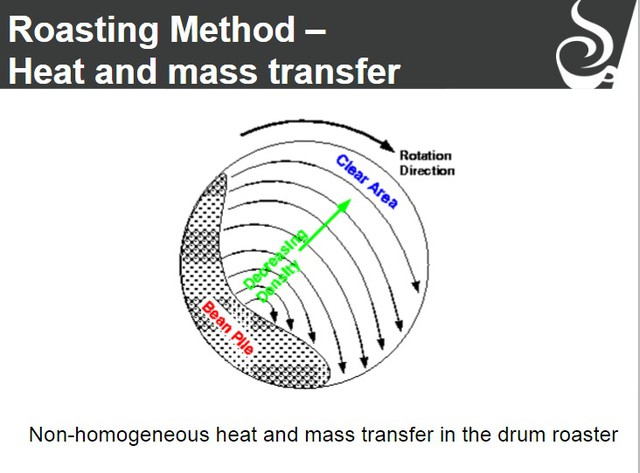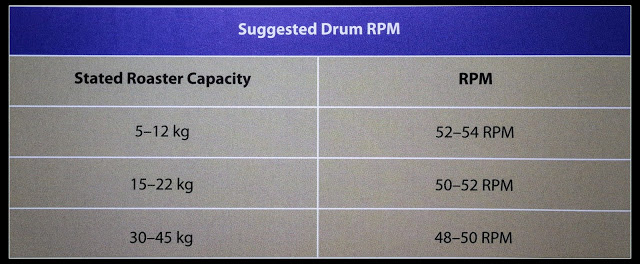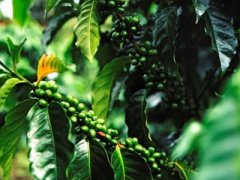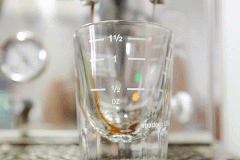Professional coffee roasting | Roller speed of bean roaster
For professional baristas, please follow the coffee workshop (Wechat official account cafe_style)
It is said that baked beans is a combination of rationality and sensibility, science and art. However, when we see the general public discussion on the Internet, most of them focus on the description of experience and feeling, and there is often no physical explanation of the bean roaster itself or the chemical changes of coffee beans at each baking stage. For me, it is painful to know why. Although we can get good results by following the same pattern, without the support of the principle behind it, even if we correct it through constant trial and error, I am worried that it is my own subjective illusion; and with the frequency of baking six to eight pots a month, it is really a long wait to get the right fruit.
For example, the drum speed is currently set at 50 rpm, and then wait for the beans to turn yellow to 55 rpm. Why do you do this? what will happen if the speed is higher or lower? in fact, even after the experiment, I can not immediately draw a conclusion from the flavor and taste. After all, there are too many variables, raw bean / baking / water temperature / method is not absolutely constant, even if drink a small difference is difficult to say who caused it.
The so-called unforgettable thoughts must reverberate. I found an article that mentioned the relationship between speed setting and baking.

1.) The rotational speed is too fast, and the effect of convective heat is reduced because the centrifugal force makes the beans attached to the tube wall and cannot fall.
2.) The speed is too slow, the beans are not stirred enough, and the heat is uneven.
3.) The ideal speed is 75% 90% of (30 / pi) * (g / r) ^ 1 to 2. Pi = 3.14159, g = 9.8m/ s ^ 2, r = drum radius.
4.) The radius of the drum is inversely proportional to the rotational speed. The larger the radius, the slower the rotational speed, but if it is too slow, there may be the problem of uneven mixing.

As pictured above (capture Probat briefing), when the speed is too slow, the leftmost bean will slide to the right and squeeze in the same place, rather than being swung by the drum.
Try to calculate the Cube750 on the hand, the radius of the drum is about 10 cm, and the maximum speed is 94.5 rpm. So the ideal speed is 70-85 rpm. Unexpectedly, it is much higher than the current set value. If the formula is credible, the representative does not have to worry about the centrifugal force, but needs to pay attention to whether the mixing is uniform.

Excerpt from a Scott Rao book chart, drum speed and baking capacity show an inverse relationship, can also prove the above statement.
(updated in 2017 with 08Action10Compact)
Scott Rao's argument for drum speed is to strike a balance between uniform baking and no scorching of beans.
Increasing rotational speed can slightly increase air flow and convective heat transfer.
It is appropriate to reduce the rotational speed when baking in small quantities.
As the bean body expands as the baking goes on, the drum speed can be gradually increased (at this point, you should pay attention to the volume of the beans)
Important Notice :
前街咖啡 FrontStreet Coffee has moved to new addredd:
FrontStreet Coffee Address: 315,Donghua East Road,GuangZhou
Tel:020 38364473
- Prev

What are the characteristics of rose summer coffee grown in different regions
Professional barista exchanges, please pay attention to coffee workshop (Weixin Official Accounts cafe_style) In the early years, the identification of top coffee mostly followed Japan. One king and one queen in coffee were Jamaica Blue Mountain and Hawaii Kona. However, with the continuous improvement of coffee producing countries and information sharing, we were exposed to more fine coffee, and this coffee bean Panama rose in summer became a recent year.
- Next

Summary of the characteristics and taste of espresso Espresso detailed steps of the production process of espresso
The exchange of professional baristas please follow the coffee workshop (Wechat official account cafe_style) at the beginning of the 20th century, Italian engineers invented the steam espresso machine, and after several evolution, espresso became an almost unshakable position in the coffee world today, from Espresso to Ristr.
Related
- Beginners will see the "Coffee pull flower" guide!
- What is the difference between ice blog purified milk and ordinary milk coffee?
- Why is the Philippines the largest producer of crops in Liberia?
- For coffee extraction, should the fine powder be retained?
- How does extracted espresso fill pressed powder? How much strength does it take to press the powder?
- How to make jasmine cold extract coffee? Is the jasmine + latte good?
- Will this little toy really make the coffee taste better? How does Lily Drip affect coffee extraction?
- Will the action of slapping the filter cup also affect coffee extraction?
- What's the difference between powder-to-water ratio and powder-to-liquid ratio?
- What is the Ethiopian local species? What does it have to do with Heirloom native species?

